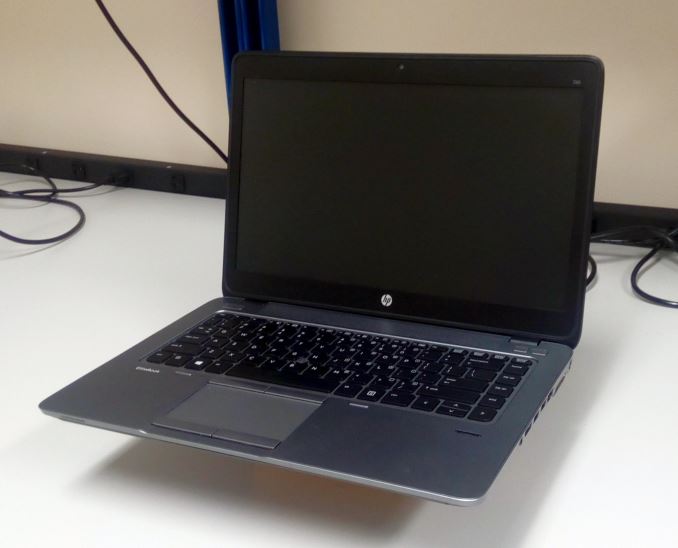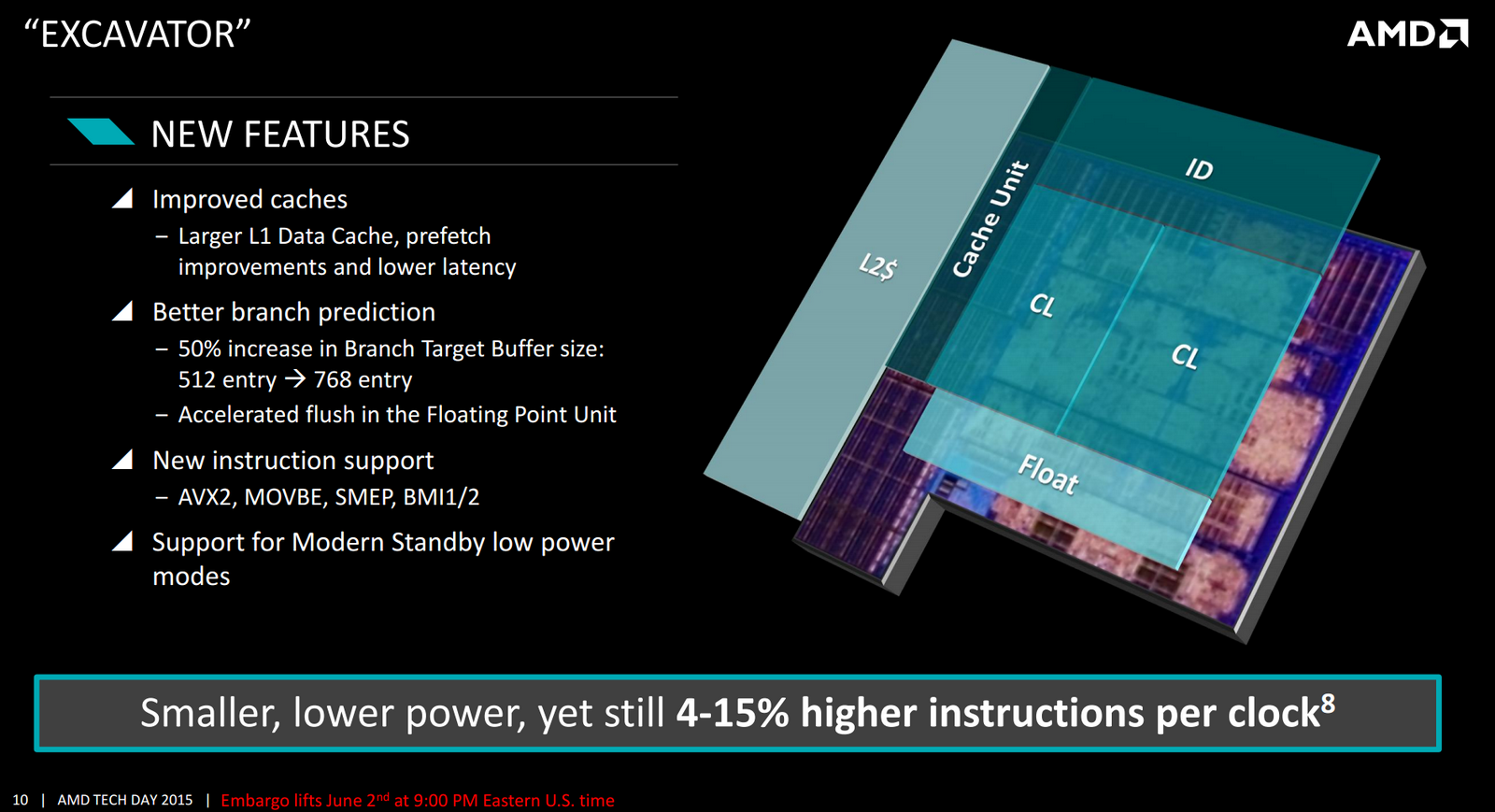Who Controls the User Experience? AMD’s Carrizo Thoroughly Tested
by Ian Cutress on February 4, 2016 8:00 AM ESTNo Room at the Win
The interesting thing about laptop design is that for the most part we are dealing with a number of devices with the same level of power consumption. This means that given sufficient standards, the same laptop shell - be it plastic, aluminium or something a bit more exotic - should be able to house different components that operate at a similar TDP, all with similar battery capacities. Thus if a company gets a ‘win’ with a laptop design, then an equivalent TDP processor from the competition (again, there are other factors involved such as controllers and z-height) should be able to work well in that same device.
But one key differentiator between Intel and AMD however is the consistent level of halo devices available with each manufacturer's hardware. It doesn't take long to find the evolutions of Intel's Ultrabook line that focus on high performance, and other premium devices designed to hit a certain combination of thickness and battery life, such as ASUS' Zenbook line or the Apple Macbook Air. In the tablet space, Intel has had design wins with the Microsoft Surface line as well as others, especially premium devices. These are all high volume, highly advertised product lines available in almost every market and not hard to find. In the case of the three mentioned above, some are household names and all of them are well known in the technical media zeitgeist.

HP Elitebook, one of the more premium designs with AMD inside
However, if AMD is mentioned in a similar vein, it is difficult to draw a single conclusion or the name of a premium or otherwise well-known laptop model from memory unless you happen to either work directly with AMD marketing or you are the product manager at a parner OEM. There have been no design wins or public contracts with AMDs mobile processors, and no big halo products that champion both performance and industrial design in a single device. As a result there has to be an element of questioning here. Are OEMs unwilling to use AMD? Do AMD products have a bad reputation? Is there something inherent with the name or product that makes OEMs reluctant, or users to withhold their purchases? Or is there something fundamentally wrong with the processor? As is often the case, the predicted answer to this question is a mixed bag.
Carrizo over Kaveri
As mentioned previously, Carrizo is the name for the family of APUs that use AMDs fourth iteration of the Bulldozer architecture, Excavator. Carrizo is built on GlobalFoundries' 28nm process node and comes inline with AMDs recent renegotiation of contracts regarding the scale and scope of the APU product line. Carrizo APUs will be available in 15W variants, which reflects the focus of the architecture update as well as the change in metal stack arrangement incorporated for this family to optimize transistor density. Meanwhile the higher-end models will have an available TDP-Up mode of 35W in order to increase performance, although this is at the discretion of the OEM. AMD for their part has already stated that their primary use case for Carrizo is at 15W, as 35W is the point where the Carrizo's power optimizations aren't quite as efficient and the performance of previous generation APUs will intersect with Carrizo (when talking raw CPU, rather than other benefits Carrizo has).
In launching Carrizo, AMD was clear on the target market for this APU - laptops in the $400-$700 range. It has been pointed out by media and analysts that this market segment represents an opportunity for AMD to fit between Intel's low power/high performance/high cost Core-M line of processors, the low power/low performance/low cost Atom line and the higher power/medium cost Core i3. According to AMD, this segment represents 40% of all laptop sales, covering users who want more than a budget device but something below the high costs of a premium device.
Meanwhile AMDs secondary aim with Carrizo is to offer premium level performance in certain applications at a lower price point by using Carrizo's stance as the first CPU architecture to be ratified against the heterogeneous system architecture (HSA) standards. As a result, AMD had been working with software developers in order to leverage HSA benefits in specific code bases and subsequently improve in performance, particularly with software of widespread importance, such as Adobe and LibreOffice.
Carrizo is a true system-on-chip (SoC), integrating the CPU, the GPU, and the input/output hub all on one piece of silicon (and thus one package). This leads to several direct benefits - reducing the power consumption of the I/O hub by bringing it down to the same process node as the main processor, allowing different areas of the SoC to be power gated under a single control system rather than recreating power delivery networks around the system, and ease of use when it comes to HSA requiring less data to travel around external buses.
AMDs main competitor in the mobile processor space, disregarding tablets for the moment and devices like Surface RT/Chromebook Pixel, is Intel. Intel, like AMD, leverages an x86 CPU design with integrated graphics on the same die. Thanks to a combination of many years of experience with graphics and designs intentionally favoring high performance integrated GPUs, AMDs main positive point of performance in recent generations has been the integrated graphics arena, where they win out typically in terms of graphics performance/cost and graphics performance/power metrics. Thus a number of improvements to Carrizo over previous architectures relate to graphics use - either using it more with HSA or offloading certain workloads to dedicated IP to keep more of the SoC at an idle state.
Carrizo’s design allows AMD to add two more graphics compute units (+33%) at 15W compared to Kaveri at a similar frequency, which combined with IPC increases in the processor has led to some interesting claims for performance. These claims have been picked up by casual readers and OEMs alike.











175 Comments
View All Comments
jabber - Friday, February 5, 2016 - link
You'd think someone was paying the OEMs to hamstring these machines...Some odd facepalm design decisions there.
CajunArson - Friday, February 5, 2016 - link
Somebody *IS* paying OEMs to hamstring the machines: Customers. Customers who want cheap products that is.AMD makes its reputation as: "Intel is too expensive! We're cheap!" Don't act all shocked and surprised when the rest of the components in the system end up being the cheap components too.
As Anand just pointed out with that price comparison, even with all the cheaping out you can still see a whopping $8 price advantage for AMD on comparably configured notebooks.
tipoo - Friday, February 5, 2016 - link
Seriously, some weird stuff. No dual graphics when the chips are almost the same performance? Single channel RAM? What the hell.Midwayman - Friday, February 5, 2016 - link
I feel like AMD needs to pull a MS surface or Nexus and put out a reference model to show OEMs how it is supposed to be done. If all OEMs will do is put out a half assed effort, at least then they can just copy the reference design and it will work well.bojblaz - Friday, February 5, 2016 - link
+1... You're right, OEMs have pissed off MS and Google enough for them to go solo. AMD could totally follow suitInquisitorDavid - Friday, February 5, 2016 - link
Sure, if they had the money to. As it stands, the company is now banking on Zen to rescue them. I don't think they can afford to invest in going solo with device designs, at least not right now.TheinsanegamerN - Thursday, February 11, 2016 - link
They could team up with the likes of MSI or Clevo. Both have done good AMD laptops in the past.A 14 inch msi laptop with a 100wh battery, a 8800p, and 8gb dual channel ram would fetch a good price from those who want AMD laptops.
0razor1 - Friday, February 5, 2016 - link
Attn Ed: The HP Elitebook 745 G2GCN 1.0 in the text and then 1.1 in the grid.
Nice read BTW.
Ian Cutress - Friday, February 5, 2016 - link
Fixed! Thanks :)RationalHaterade - Friday, February 5, 2016 - link
Great write-up, Ian. This is enlightening, and the buoyant attitude at AMD might be saying a lot about what we can expect to see from the 2016/17 product releases.Speaking to Carrizo, I'm not sure they realized how badly they were hurting themselves when they elected to keep Kabini/Temash as single-channel designs and then provide OEMs a cheap out by making it pin-compatible with the big architecture. GCN has always been very bandwidth-dependent in every APU they've released. These single-channel setups have got to be really starving the SoC.
Either way, the performance picture points out what everyone already knows. Zen can't get to mobile quickly enough.